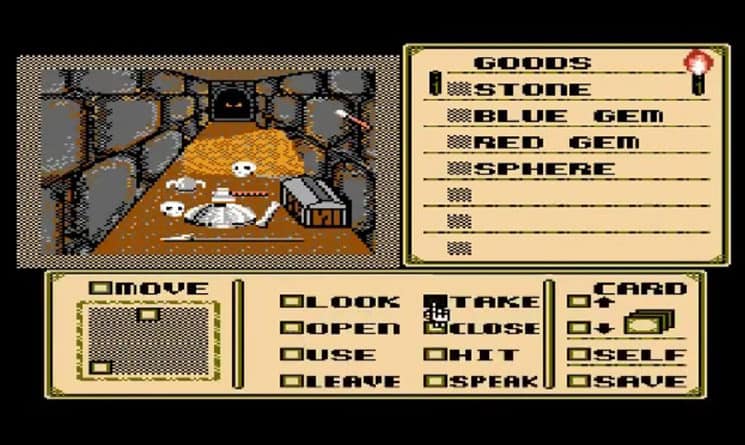Shadowgate
(Kemco, 1989)
There is nothing about “Shadowgate,” a decades-old first-person role playing game, that should work. Nothing. It was a port of a two-year old black-and-white PC game. Most of the movement in the game involved a pixelated quill writing out messages to you from an omniscient narrator. The images of Castle Shadowgate you do see are stills shrunk down to a third of your screen. The music is a droning repetition of medieval drum and fife by way of discount Casio. And the deaths? Oh, the deaths. The quick, varied, and gruesome ways to bring your journey to an end rival any game made to this day. Can making a game as undesirable as possible truly be a mission statement?
In the summer of 1990, I temporarily traded my copy of “Gilligan’s Island” (a game I inexplicably liked) to a friend of mine for “Shadowgate.” I never gave it back. The mission statement must have worked — “Shadowgate” is one of the most unique and addicting games ever released for the Nintendo Entertainment System.
How do you play? Step 1: Press power on your NES. Step 2: Be greeted by a self-indulgent 115-word prelude peppered with phrases including, “dreaded Warlock Lord,” “raise the Behemoth,” and “seed of prophecy.” Most never made it past the second step. But those who stuck around? They would become frustrated. They would curse. They would take the game out and throw it against the wall. They would comb through recent issues of Nintendo Power desperate for pre-Internet era hints. What else could one do when faced with a variety of deaths via: falling (loose bridge tiles, tripping into an orc’s well), piercing (troll spear, explosive magic mirror), burning (dragon breath), dissolving (mystery slime), gnashing (a castle outfitted with both alligators and sharks), lust (that female werewolf had something else in mind), and, obviously, a galactic grim reaper (thanks to a teleportation portal).
Let’s be honest. You read that last part and thought, “That does sound tough — but also incredibly awesome.” You’re correct. “Shadowgate” was a founding knight in the “medieval masochism” genre that would include PC, console, and mobile games like “Dungeon Keeper,” “Clash of Clans,” and several “Shadowgate” sequels.
An initial turn-off, the antiquated controls that lead you in your quest around the castle quickly morph into part of the charm. By 1989, the point-and-click interface that made games like “King’s Quest” top sellers less than five years earlier were labeled with the worst adjective you could give a game in the days of single-digit bits: old school. “Shadowgate” embraced it at every turn. There’s a card catalog for perusing your collected items. Instead of executing one of those perfectly-timed jumps over a chasm, you clicked “move,” clicked the direction you wanted to go, and then you died in some macabre fashion.
Playing “Shadowgate” will kill you — multiple times and with a variety of imaginative gore that will keep you coming back. It’s more than I can say for watching the Skipper continually slip on banana peels.
Hidden Gem or Total Junk:
Hidden Gem

